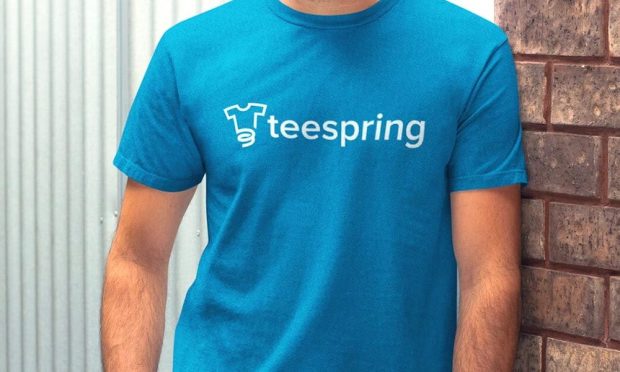Turning T-Shirts Into A Marketplace

In an average human lifetime – most people are bound to come up with one truly good T-shirt slogan.
But, until very recently, many of those ideas were cast by the wayside because making and marketing T-shirts is a bit more work than the average amateur slogan-smith is able to do.
But in 2011, two Brown University seniors, Walker Williams and Evan Stites-Clayton, discovered how hard bringing T-shirts to market was when they tried to create a website to sell T-shirts commemorating the closing of their favorite Providence bar.
“We wanted to prove that we could be great at apparel. But we think of the product as a platform for entrepreneurs. Our goal is to allow someone to run a complete brand through Teespring,” Williams said of their choice to stay almost entirely focused on T-shirts in the early days.
That focus has grown across the apparel business – Teespring is still a place where one goes with a clever slogan or beautiful logo to make a T-shirt happen, but it also offers hats, mugs and athletic wear.
The premise of the marketplace, however, remains largely the same as being the Kickstarter for clothing.
People or organizations with a design for a T-shirt upload it to the Teespring platform, adding text and tweaking their designs as necessary for about $9 per shirt, (depending on the complexity).
Then the designer sets a price for the T-shirt and the sale is launched on Teespring. It only goes live when a certain number of shirts have been pre-ordered.
Once the threshold is crossed, TeeSpring sends the order to a manufacturing partner or to its new $22-million manufacturing facility in Kentucky, ships them to customers and hands the T-shirt designer the difference between the sale and design prices of the T-shirt.
Sellers get a chance to start up their own apparel firm without the hassles of inventory and manufacturing. Some sellers have created very successful businesses.
“Our goal is to empower anyone with a good idea,” Williams said.
And at $300 million in merchandise sold since its founding, there are clearly a lot of good ideas getting empowered.
But the business is not without challenges. Teespring recently found itself on the wrong side of a PR crisis when one of its marketplace members marketed a deeply offensive T-shirt with the slogan “Black Women Are Trash.”
The outcry was huge, and Teespring was took responsibility and apologized, noting that it has procedures in place to keep such offensive content off the platform, but that they had failed.
“Once we learned of the error we immediately took steps to remove all content in question and ban the offending seller from our platform. We have since fixed the issue,” Brett Miller, director of seller success at Teespring, told USA Today.
And even when the material isn’t offensive, there is always the chance that it will violate copyright laws, as sometimes people like to borrow great ideas instead of design their own.
But, the firm’s founders noted, the problems and bad ideas are rare and are outweighed by the potential the site opens for anyone anywhere to get their start in apparel.
As for what’s next, Teespring’s owners aren’t telling, saying, “Look over the summer for new products and innovations we are opening up to our sellers.”
We will – as many of the shirts on Teespring advise – Keep Calm and Carry On until we get to see the latest and greatest.
